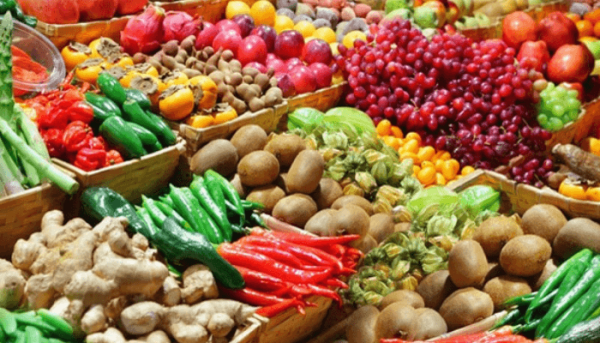Achieving food security in Nigeria is a pressing challenge, requiring the adoption of innovative practices throughout the agricultural value chain.
One of the most critical areas of focus is the preservation of fruits and vegetables, which are highly perishable and have a short shelf life.
Waxing, or wax coating, offers a promising solution to this issue, though it remains underutilized across Nigeria and Africa. This method can help extend the longevity of produce, playing a crucial role in reducing post-harvest losses and enhancing food security.
The Role of Waxing in Food Preservation
Waxing involves applying a food-grade wax layer to the surface of fruits and vegetables to replace some of the natural wax that is lost during harvesting, washing, and post-harvest handling.
Common fruits and vegetables that benefit from waxing include tomatoes, peppers, apples, oranges, cucumbers, and papayas.
The wax coating helps reduce water loss, maintain the appearance, and provide a barrier against decay-causing organisms such as moulds and bacteria. In regions without refrigeration, waxing is particularly valuable, as it can extend the shelf life of produce.
Fruits like apples, citrus fruits, cucumbers, avocados, and tomatoes are ideal candidates for waxing. However, some produce, such as leafy greens, cabbage, and root vegetables, are not suitable for wax coatings.
In the case of oranges, waxing not only enhances their appearance but also helps reduce weight loss, ensuring they remain marketable for longer periods.
Why Waxing is Essential
Wax coating is primarily done to improve the visual appeal of fruits and vegetables, making them more attractive to consumers. Beyond aesthetics, waxing also extends shelf life, slows down the development of moulds, and reduces water loss by up to 30%. This makes it an effective technique under commercial conditions, particularly in the absence of refrigeration.
Various types of wax are used for preservation, including:
1. Carnauba Wax: An affordable option with a low shine.
2. Shellac Wax: Known for its superior shine but prone to chalking after refrigeration.
3. Polyethylene Wax: Effective for controlling weight loss and providing a reasonable shine at a low cost.
4. Resin Wax: Offers a good shine but may cause damage to fruits like oranges.
To ensure optimal results, the waxing process requires careful consideration, including applying the correct amount of wax (typically 1.5 litres per ton of produce) and ensuring the fruits are clean and dry before application. The wax material must be food-grade, resistant to chalking, and capable of reducing weight loss by 30% to 50%.
Health Risks of Wax Consumption
While waxing can significantly improve food preservation, it is not without risks. If consumers fail to properly wash waxed produce, they may face potential health hazards.
One concern is the use of morpholine, a solvent in wax coatings.
When morpholine interacts with nitrates inside the body, it can form N-nitrosomorpholine (NMOR), a carcinogen linked to liver and kidney cancers. Regular ingestion of wax-coated fruits and vegetables may also lead to kidney and liver damage and allergic reactions caused by proteins in the wax.
Therefore, it is essential for consumers to thoroughly wash waxed produce before consumption.
A Step Toward Reducing Post-Harvest Losses
Nigeria currently loses an estimated ₦3.5 trillion annually due to post-harvest losses, according to the Minister of Agriculture, Mohammad Mahmood Abubakar.
The lack of adequate storage is a significant challenge, particularly for crops like cucumbers, which spoil rapidly due to high water content.
Researcher Kalu Orji has noted that poor storage conditions lead to market gluts and price slumps, further compounding farmers’ losses.
A Call for Sustainable Practices
Research from the Nigerian Stored Products Research Institute (NSPRI) highlights that only certain fruits and vegetables benefit from waxing.
These include apples, avocados, cucumbers, and tomatoes. However, the choice of wax is crucial, as some types may contain harmful chemicals.
Farmers need to use natural, food-grade wax materials and seek professional guidance when adopting this preservation method.
With proper implementation and consumer education, waxing could be a game-changing strategy for improving food preservation in Nigeria.
By reducing post-harvest losses and extending the shelf life of perishable produce, waxing techniques could contribute to enhanced food security and a more resilient agricultural sector.


